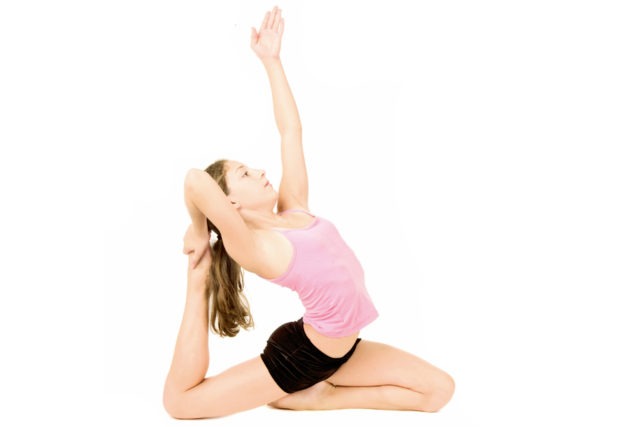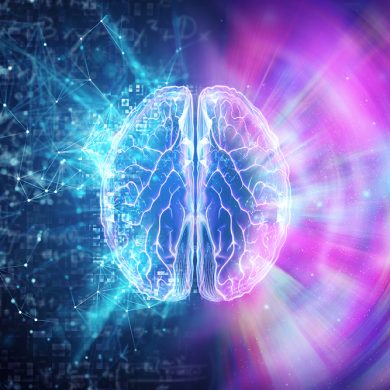The first question I ask myself at an initial meeting with my patient is, “Does this person feel whole? If not, what tools will I use and where will I begin?”
You and I are different, although, in essence we are one and the same; I know you as I know myself, that is, “essentially.” I feel profound compassion for you because we co-originate as a finite expression of the infinite. This is our essential self – Brahman’s innate will to achieve consciousness in a creative fashion. In India’s divine cast of deities, Brahman plays the Hindu impersonal form of God, used when speaking of God as the original creative force, and is often referred to as the “ground of all being.”
We call Brahman’s innate will to achieve consciousness “transcendence.” This transcendent quality is our universe’s fundamental song and is sung by all creatures known and yet unknown. Our world vibrates, breathing dynamic energy. Zen Buddhists say if one sits quietly enough, the stone may be heard growing in the side of a cliff.
Dynamic energy manifests countless forms, moment to moment, by transcending its earlier moments, using established notes to generate a new composition containing those notes, thus expressing itself in the universe as exponential, different, and more complex. Old notes and arrangements giving birth to new notation, evolves a fresh musical segment, each composition totaling more than the sum of its individual notes – stone growing.
From the simple to the complex, imparts direction to a fecund cosmos: the seed to the sapling to the tree to the forest. Each forest element depends on every other elemental contribution to express nature’s song. This coorigination imparts cohesiveness to the music of Brahman’s inspired creation, while ancient Eastern theology, arts, and sciences, such as Vedanta and yoga, sing through the ages, “God is one.”
Our evolution is a mindful one. We share direction and an innate cohesive consciousness traveling a glorious journey. I heal you because I see Brahman as the infinite universe, as each of us, and I value my human experience in those terms.
Why begin our understanding of Integral Yoga Therapy by first grasping this point about the transcendent process of ourselves, and the infinite cosmology as Brahman, as a single whole? Healing means to make whole – to make being whole an aware, conscious activity. The first question I ask myself at an initial meeting with my patient is, “Does this person feel whole? If not, what tools will I use and where will I begin?” A backache can be simply a backache. However, I often sense physical pain as the result of fear, anxiety, frustration, anger, and depression – symptomatology consequential of years struggling to achieve wholeness. During our initial interview, when I ask probing self image questions, I learn the patient’s awareness is bereft of their spiritual connection, an idea of who or what their true self is, or why they are an integral, dynamic essence experiencing life’s journey. When they introspect and view themselves as being born into their world – rather than from that world – they feel insecure, confused and separated from an infinite, intentional mind inclusive of, but broader than their own.
Unaware of humankind’s fundamental nature, they have suffered building a sense of self and their sojourn, and sense themselves set apart from others and from spirit. The foundation is incomplete; yet, grown to adulthood, they construct houses of bones and muscles while remaining spiritually homeless. Years later, after facing life’s storms, the foundation gives way, the house leans putting stress on a section of lumbar. The spine aches, and worse, if we correct the symptoms using yoga strengthening and flexibility asanas, but do not repair the perceptual foundation, the pain simply moves to another area.
As therapists – conventional, complementary, or alternative – we cannot offer an invitation to the whole-life unless diagnoses concerning patients and students are born of our own whole awareness. We must balance a healer’s collection of factual knowledge with our wisdom tradition of compassionate intuition. The finest healers, east and west, from all schools, have sought to mold medicine with spirit in humanity’s abode. This living homeostatic vision is the reality we have to offer. Gaining a foothold on what it means to live as a consciously whole human being is where the healing process begins.
Meditation
That meditation can be taught is a misconception. Exercises preparing the mind, body, and spirit connection for the moment meditation’s state embraces one, on the other hand, can be taught. As a therapist, I can only aid one’s preparation for the meditation experience.
This ancient exercise is the fastest and most complete way of attaining a deep state of relaxation that I know of. It is an excellent exercise for learning to use your mind to take control of your vital energy body, and through your breathing to take control of your mind.
We are all energy and this energy is visualized as a golden-white light. The energy light works without any effort or instruction. You simply need be “aware” to witness the light working.
Begin at your feet. Feel the golden-white light working like heated fingers massaging the bottoms of your feet. The light works from deep within the muscles. Its direction is from “within to without.” Your breathing is natural. The light rises past your ankles and up your calves softening the muscles from deep within and you feel them becoming fluid and relaxed. Tension and stress cannot exist in the same space as the golden-white light, so, you make a choice, and you always choose the light as you go deeper into relaxation. This process continues until the light has reached the top of your head, spreads throughout your face muscles, your trapezius muscle, your shoulders, down along your arms and into your fingers.
Many yogis use the above technique as part of their Shavasana (Corpse or Rest Pose) at the end of their Hatha routine. Others use this exercise to go to a deep level of mental relaxation where they may then drop a suggestion or a current life issue for examination into the mind’s stilled waters. .
Lastly, my practice is in line with my factual knowledge and intuitive faith in my direct experience. In the course of treatment, I may touch upon the physical, philosophical – and with caution – spiritual concepts of Eastern traditions. While these elements have often been born of religious fundamentals, I do not challenge my patients’ religious views; that is against my views. I am a health professional, and I bring philosophical and spiritual concepts into counsel only in so far as these may affect one’s physical health.
During meditation exercises, I use a script that is designed to challenge and change one’s daily perception of their living journey – if such a script will improve the pathology, which the patient and I have agreed requires treatment. At such times, I am careful to reference our cosmological being in non-sectarian terms. The same rules apply when speaking of asana as moving meditation.
It is the responsibility of every therapist and patient to do their part in securing a relevant relationship. As a mystic working in the West, I lean towards the Jungian point of view, and that philosophy will find its way into the consulting portion of my therapy before Freud. As an Integral Yoga therapist, I’ll give the final word to an individual I admire in the world of Integral Yoga, Sri Aurobindo: “The yoga we practice is not for ourselves alone, but for the Divine; its aim is to work out the will of the Divine in the world, to effect a spiritual transformation and to bring down a divine nature and a divine life into the mental, vital and physical nature and life of humanity … liberation and transformation of the human being.”







